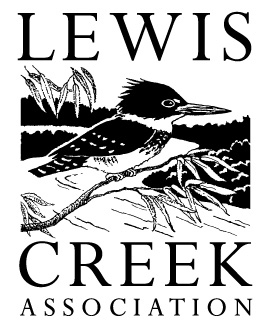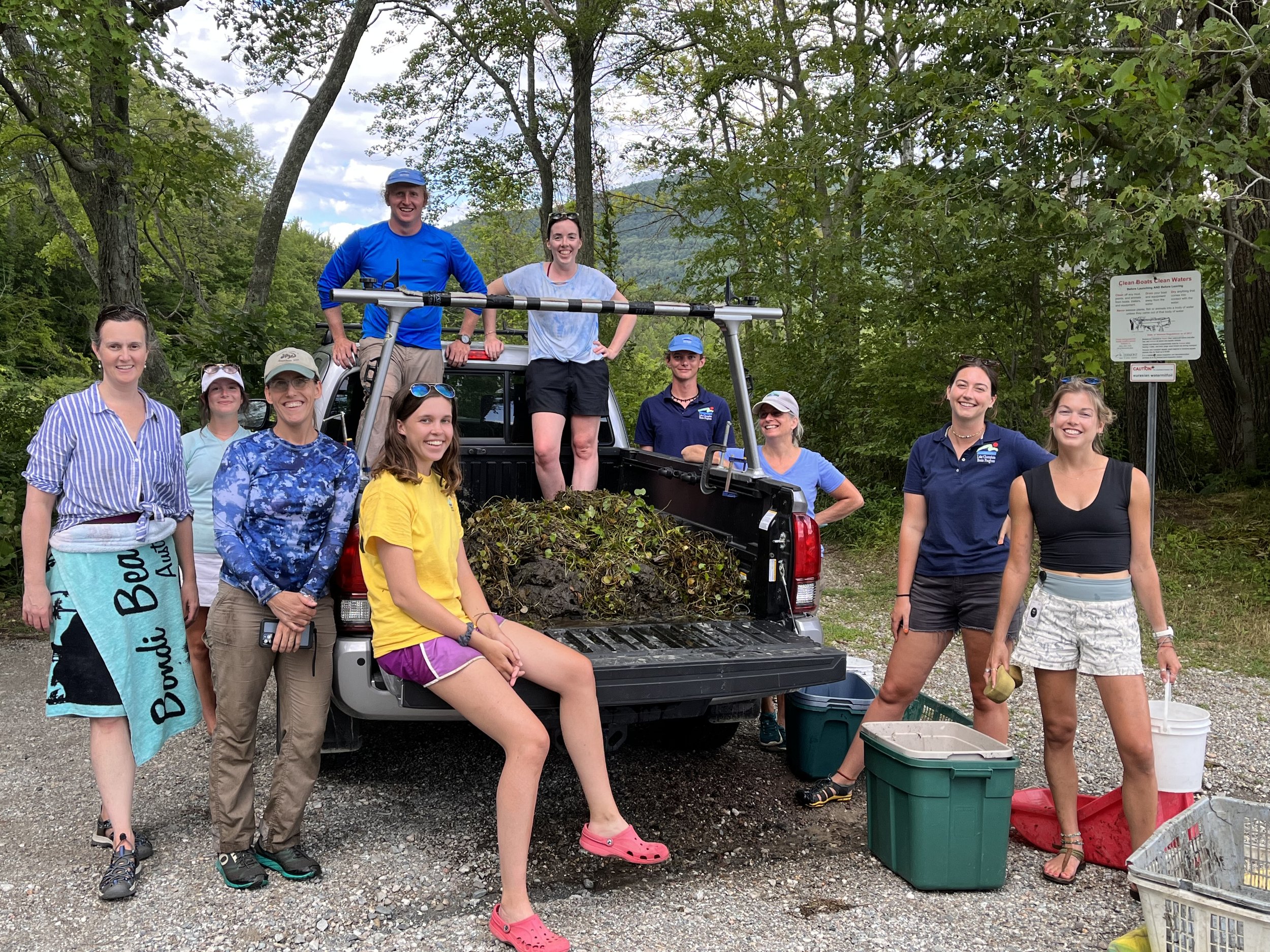Boat Launch Steward Program
Aquatic Invasive Species background
Aquatic invasive species (AIS) are expensive to control, costing town, State, and Federal governments millions of dollars annually. AIS are easily spread between waterbodies via (but not limited to) fishing equipment, recreational equipment, and the transport of watercraft and their trailers. The spread of AIS is effectively minimized through education and outreach, equipment inspections, watercraft decontaminations, and community involvement. Without community involvement and volunteer support, the long-term management of AIS in the Lewis Creek, LaPlatte River, and direct-to-lake watersheds would be financially unsustainable. Therefore, Lewis Creek Association’s (LCA) goal is to get the communities in these watersheds involved in early detection and rapid response, in order to prevent the spread of and control AIS within the watershed.
AIS harm ecosystems, local economies, and human health in the Lake Champlain Basin. Aquatic invasive plant species have been present in our watersheds for decades and can outcompete native plants by forming dense mats of vegetation. These dense mats impede recreational boaters, swimmers, and anglers, and degrade ecosystems and wildlife habitats. Aquatic invasive plants are spread via seeds, roots, fragments, animals, and by humans. Documenting where aquatic invasive plants occur within our watersheds will help towns, watershed groups, and State and Federal agencies monitor their distribution, and may help focus management efforts in the future.
The presence of AIS in our watersheds threatens the biological health and equilibrium of the watershed. If aquatic invasive plants are allowed to spread throughout the watershed, biodiversity may be reduced, the productivity, nutrient cycling, and microorganisms of these natural systems could be negatively impacted, and the food web may be detrimentally modified. Currently, very few aquatic invasive plant species occur within the Lewis Creek watershed (see our Invasive Plants page for more details on some of those found in our watershed). If control efforts of the aquatic invasive plants that already exist in the watershed occur, the likelihood of them spreading to other uninfested areas of the watershed are relatively low.
LCA’s boat launch steward inspects kayaks before launching at Bristol Pond, 2020. Photo credit: Matt Gorton.
Boat launch steward program
Boat launch stewards are responsible for interacting with recreational boaters, anglers, and the general public to educate them about aquatic invasive species threats to the watershed and the proper cleaning methods for their recreational equipment (in particular focusing on cleaning, draining, and drying equipment). While educating the public, the boat launch stewards also collect survey data on boater behaviors, and identify and remove invasive species from watercrafts. In 2020, LCA began a boat launch steward program at Bristol Pond, which was expanded in 2021, and has continued in 2023 & 2024 to include Monkton Pond. Stewards were in place at each pond three to four days a week (always during weekends) June-September. These programs were made possible thanks to funding from the Lake Champlain Basin Program/NEIWPCC.
In 2020, the boat launch steward at Bristol Pond interacted with 570 watercraft. Approximately 62% of visitors took AIS spread prevention measures before visiting Bristol Pond. Approximately 11% of watercraft had aquatic plants on them during inspections. View a presentation of our results on our YouTube channel (start at 32 minutes into the recording).
In 2021, the stewards interacted with 425 watercraft at Bristol Pond and 173 watercraft at Monkton Pond. Approximately 73% of visitors to Bristol Pond and 64% of visitors to Monkton Pond took AIS spread prevention measures before visiting. The visitors who had no prior contact with boat launch stewards did not take AIS spread prevention measures. 237 (41%) of boats had aquatic plants on them during inspections. Brittle naiad (an aquatic invasive species that had not been documented in Bristol Pond before) was discovered by the boat launch stewards in 2021 at Bristol Pond. View a presentation of our results on our YouTube channel.
Volunteers and staff from Lake Champlain Basin Program, Vermont Department of Conservation, and LCA pose with their invasive species haul from Bristol Pond, 2022. Photo credit: Craig Dicken
In 2022, the stewards interacted with 312 watercraft at Bristol Pond and 113 at Monkton Pond. Approximately 96% of visitors took AIS spread prevention measures before visiting. Approximately 40% of motorboats had plants on them prior to inspection. We held a volunteer removal day to tackle the newly-discovered brittle naiad infestation near the boat launch. View a presentation of our results on our YouTube channel.
In 2023, the stewards interacted with 195 watercraft at Bristol Pond and 64 watercraft at Monkton Pond. 24% of motorboats at Bristol Pond, and 31% of motorboats at Monkton Pond had aquatic plants on them prior to inspection. Brittle naiad continued to be removed by hand from near the Bristol Pond boat launch.
Seasonal REports
2021 Report, Bristol & Monkton Ponds
Lewis Creek AIS Survey and Management Plan
As part of the grant awarded by LCBP/NEIWPCC grant in 2020, we worked with contractor Matthew Gorton to complete a survey of aquatic invasive species (AIS) in the Lewis Creek watershed. This survey resulted in an interactive online map of AIS in the Lewis Creek watershed, and a management plan. These resources will be helpful to partners in prioritizing ongoing and future management efforts.
This project has been funded wholly or in part by the United States Environmental Protection Agency under assistance agreement (LC00A00695) to NEIWPCC in partnership with the Lake Champlain Basin Program.



